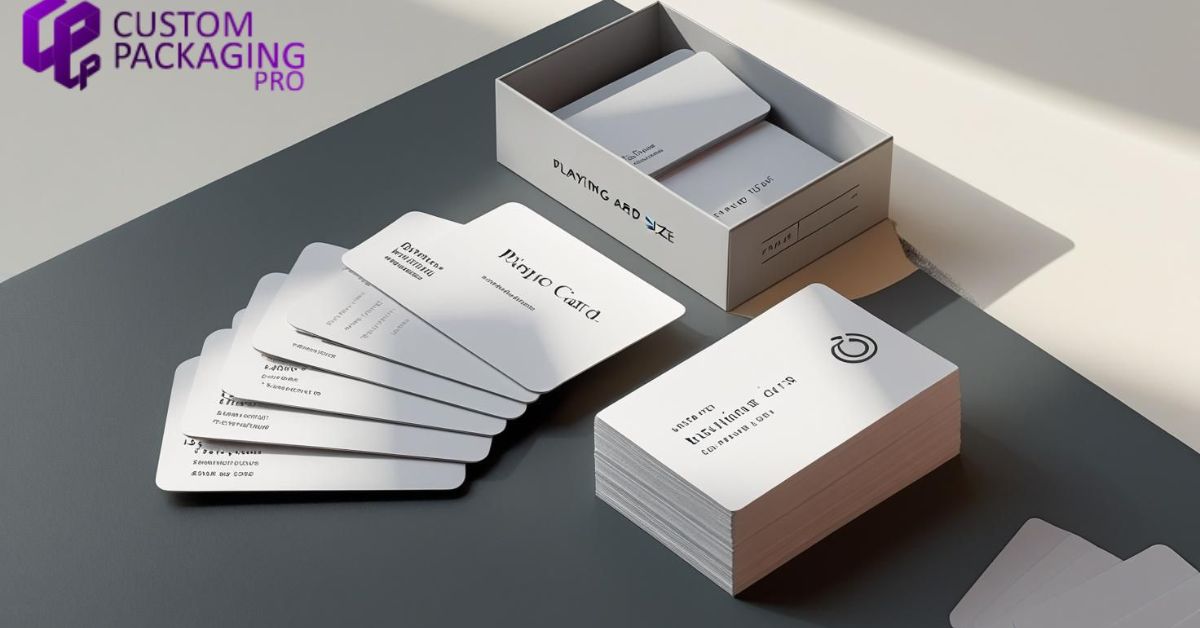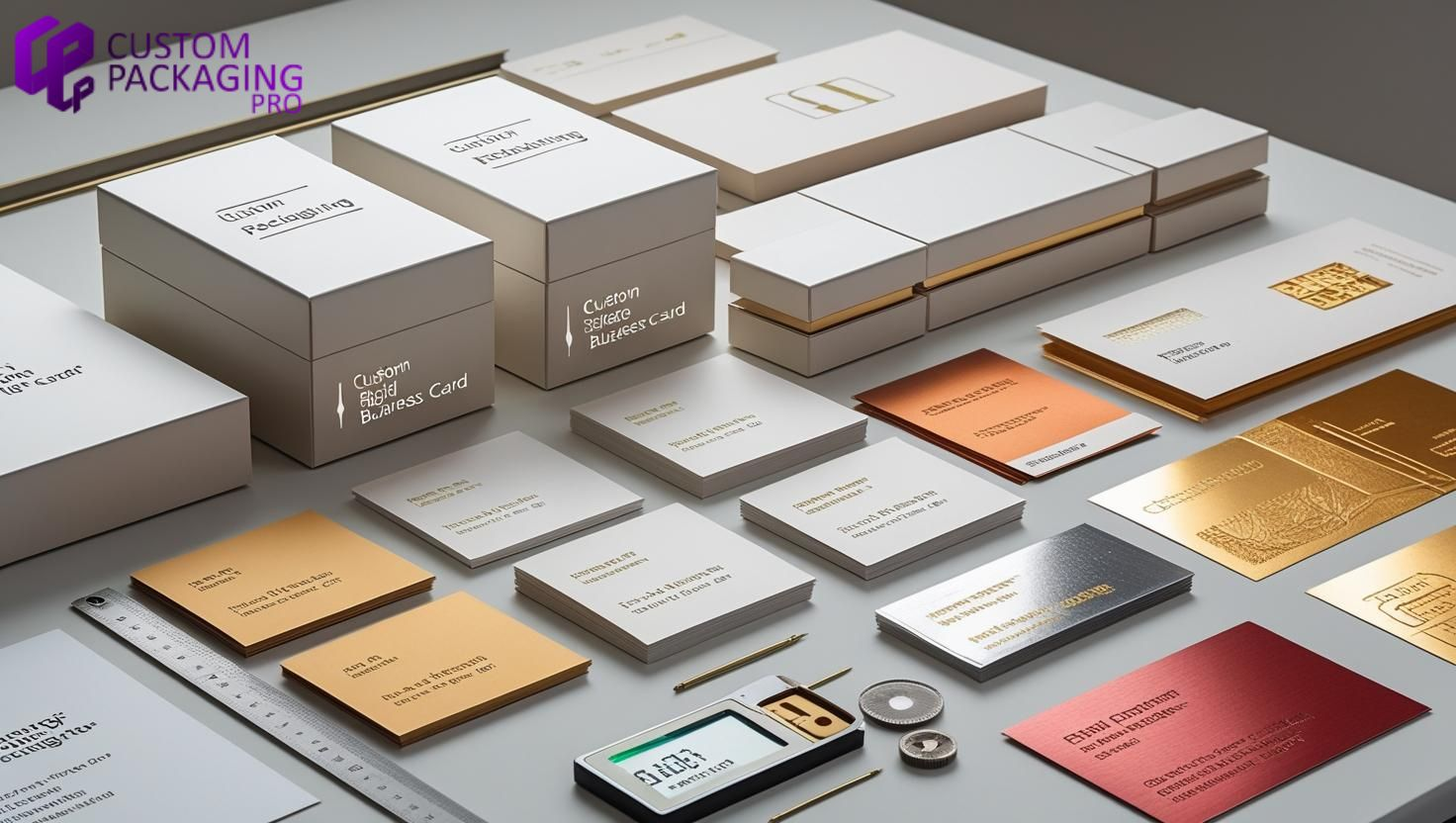BUSINESS
10 Best Communication Platforms for Businesses in 2025

In 2025, the best communication platforms for business aren’t just chat rooms or video links. They weave every message, text, voice, video, file, and task into one tidy flow so teams act faster and customers feel heard.
After months of interviews with IT managers, deep dives into product roadmaps, and late‑night scrolls through user forums, we narrowed the market to ten standout tools. This guide explains why each option shines, what pitfalls to watch, and how to choose the perfect fit.
What Makes a Platform “Best” Today?
You’ll see the phrase best communication platforms for business a lot in marketing brochures, but our yardstick rests on six pillars:
- Ease of use– New hires should master the basics before lunch.
- Unified channels– Chat, calls, video, and files under one login.
- Strong security– End‑to‑end encryption plus options for HIPAA, GDPR, or SOC 2.
- Open integrations– Smooth links to CRM, help desks, and project boards.
- Transparent pricing– No surprise surcharges for essentials like search history.
- Scalability– Growth from five founders to five thousand staff without painful migrations.
Hold these factors in mind as we tour the top ten contenders.
1. Microsoft Teams
Why is it on the list?
Teams ties directly into Microsoft 365. Word docs, Excel sheets, and PowerPoint decks open natively, while “Teams Phone” turns the service into a full PBX. New AI features now generate meeting notes, action lists, and even suggested email follow‑ups.
Ideal fit
Companies with Microsoft 365 subscriptions or schools that rely on Outlook.
Heads‑up
Channel sprawl can become messy. Establish naming rules early.
2. Slack
Why is it on the list?
Slack introduced threaded chat and continues to excel at app connections—over 2,400 and counting. The new “Canvas” panel lets teams pin docs, images, and to‑dos right beside conversations. Powerful search finds any file in seconds.
Ideal fit
Startups, dev shops, and creative agencies are looking for limitless customization.
Heads‑up
Costs climb when you add premium bots or advanced compliance tools. Audit usage every quarter.
3. Zoom Workplace
Why is it on the list?
Zoom’s video is still the smoothest in shaky hotel Wi‑Fi. The company now bundles persistent chat, whiteboards, and a cloud phone service. Its AI Companion writes instant summaries and highlights follow‑up tasks—great for busy sales teams.
Ideal fit
Organizations hosting frequent webinars, customer demos, or hybrid events.
Heads‑up
Free tiers limit cloud recordings. Budget extra if you achieve meetings.
4. Google Workspace (Meet and Chat)
Why is it on the list
Gmail, Docs, Sheets, and Slides sit just a click away. “Gemini” AI drafts agendas, rewrites emails, and suggests next steps. Chat “Spaces” combine threads, tasks, and shared Drive folders into one live dashboard.
Ideal fit
Remote teams are already deep into Google Docs, Drive, and Calendar.
Heads‑up
Admin menus are powerful but complex. Spend time on role‑based permissions.
5. Cisco Webex Suite
Why is it on the list?
Security first: end‑to‑end encryption, FedRAMP options, and Data Loss Prevention tie‑ins. “Immersive share” turns presenters into news‑style overlays in front of slides. Webex Calling supplies local numbers in 65 countries and automatic emergency location tagging.
Ideal fit
Healthcare, finance, or government entities that put compliance at the top of the wish list.
Heads‑up
High‑def video needs strong hardware; older laptops may complain.
6. RingCentral MVP
Why is it on the list?
MVP stands for Message, Video, Phone—exactly what RingCentral delivers in one sleek app. You get team messaging, full HD conferencing, and a cloud PBX with advanced call routing, IVR menus, and real‑time analytics.
Ideal fit
Businesses are dropping legacy phone lines but still need robust voice features.
Heads‑up
International minutes add up fast. Negotiate bundles if you dial overseas regularly.
7. ClickUp Collaboration
Why is it on the list?
ClickUp bundles chat, project boards, docs, and whiteboards. Automations can move tasks to the next column whenever specific keywords pop up in a chat. Real‑time dashboards keep goal progress front and center.
Ideal fit
Product‑led companies crave a workspace for brainstorming to launch.
Heads‑up
The feature list is long; onboard staff should slow down to avoid being overwhelmed.
8. Discord for Work
Why is it on the list?
Originally for gamers, Discord now offers low‑latency voice channels perfect for live support desks. New forum threads store Q&A neatly. Paid enterprise tiers include unlimited message history and advanced admin controls.
Ideal fit
Creative studios, gaming companies, and fan‑driven brands are building community hubs.
Heads‑up
Combat the “gamer” perception with professional branding and clear conduct rules.
9. Zoho Cliq plus Zoho Voice
Why is it on the list?
Cliq slots into the larger Zoho family—CRM, Desk, Projects—so ticket updates, lead assignments, and project milestones appear automatically in chat. Zoho Voice adds pay‑as‑you‑go calling without heavy infrastructure.
Ideal fit
Cost‑conscious small businesses have already invested in Zoho’s ecosystem.
Heads‑up
Third‑party integration catalog is smaller than that of Slack or Teams.
10. Workplace by Meta
Why is it on the list?
The Facebook‑style news feed feels instantly familiar. Live Video streams town halls with automatic captions and translations. The Knowledge Library stores SOPs in a searchable, mobile‑friendly format—great for desk‑less staff.
Ideal fit
Retail chains, logistics firms, or hospitality groups where employees rely on phones, not desktops.
Heads‑up
Review data ownership clauses carefully if your company deals with sensitive files.
Price Ranges Without Spreadsheet Jargon
- Microsoft Teamsstarts at around six dollars per user each month for Business Basic, but AI Copilot adds another thirty dollars.
- Slack Proruns about nine dollars per user. Slack AI is a separate ten‑dollar add‑on.
- Zoom Workplacesits at fifteen dollars per user and already bundles its AI Companion.
- Google Workspacebegins at six dollars. Gemini AI costs ten more.
- Cisco Webexlists at just under fifteen dollars; calling plans tack on several extra dollars.
- RingCentral MVPcosts about thirty dollars yet includes unlimited U.S. and Canada minutes.
- ClickUp Businesscharges twelve dollars and includes whiteboards at no extra cost.
- Discord Enterpriseaverages fifteen dollars on an annual commitment.
- Zoho Cliqcharges four dollars while voice calls bill per minute; bundling with Zoho One lowers the tab.
- Workplace by Metais a bargain at four dollars, with premium support adding two more.
Prices reflect U.S. list rates in mid‑2025 and may shift with promotions or regions.
Four‑Step Selection Checklist
- Identify top pains.Is email overload your nightmare? Are customer calls dropping? Rank the problems a new platform must fix.
- Audit licenses you already pay for.If Microsoft 365 or Google Workspace is in your budget, explore the included tools before buying separate apps.
- Pilot two finalists for two weeks.Create mixed‑department squads—sales, ops, dev—and let them run daily stand‑ups, client calls, and file swaps. Collect honest feedback on speed and fun factor.
- Calculate the total cost of ownership.Add licenses, staff training hours, likely hardware (headsets, webcams), and custom integration work. The cheapest sticker price sometimes hides hefty labor.
Follow these steps, and the hunt for the best communication platforms for business becomes a data‑driven decision instead of a coin toss.
Must‑Have Security Features in 2025
- Multi‑factor authentication on every admin role
- End‑to‑end encryption for both chat and voice
- Granular, role‑based permissions to fence guest access
- Data residency options for GDPR or HIPAA compliance
- Exportable audit logs for your SIEM or compliance team
Each platform in our list checks the basic boxes. Deep dive if you operate in healthcare, finance, or government.
Real‑World Wins
Manufacturing Marvel
A Michigan parts supplier ditched patchy email chains for Slack channels paired with Zoom Workplace video. Machine issues now resolve in chat huddles, cutting downtime by eighteen percent and boosting on‑time deliveries.
Hospitality Hero
A resort group switched from copper lines to RingCentral MVP. Free on‑network calls between properties, plus automated wake‑up services, saved seventy‑two thousand dollars in the first year.
These stories prove why selecting one of the best communication platforms for business translates into both savings and happier customers.
Trends Shaping Tomorrow’s Platforms
- AI Meeting Agentsthat schedule, join, transcribe, and file follow‑ups automatically.
- Smart Meeting Roomswhere cameras track speakers and whiteboards sync live to remote screens.
- Voice‑Command Workflowssuch as “send the sales deck to the ops channel.”
- Carbon Dashboardsshowing travel miles saved by virtual meetings for ESG reports.
- Universal Notification Centersmerge tasks, mentions, and approvals from every app into one feed.
Tools that adopt these innovations early will likely dominate the “best communication platforms for business” lists of 2026.
Pitfalls to Dodge
- Replacing email with five separate chat apps—tool fatigue kills productivity.
- Locking every channel—over‑privacy stifles collaboration; default to open unless data demands secrecy.
- Skipping training—five‑minute video tutorials and champion users speed adoption.
- Ignoring policy—simple rules on channel naming, file retention, and urgency tags prevent chaos.
- Failing to collect feedback—survey users quarterly and adjust settings as platforms evolve.
Avoid these traps, and your shiny new hub won’t turn into tomorrow’s headache.
Bringing It All Together
Choosing among the best communication platforms for business boils down to two truths: know your pain points and respect your culture. Audit where conversations stall, pick two candidates, pilot with real tasks, compare total cost, and roll out with clear guidelines. Technology amplifies culture, not vice versa.
Encourage transparent channels, celebrate quick wins, and keep etiquette simple. When people trust the platform, they talk more, fix problems sooner, and delight customers daily.
Ready to act? Select two tools from the list, spin up sandbox spaces, and invite a pilot squad. In just fourteen days, you will see which solution sparks more smiles—and smiles, in the end, fuel productivity better than any feature grid.
BUSINESS
How Often Should You Visit the Dentist? Insurance-Friendly Tips

General Recommendations for Dental Visits
How often you need to visit the dentist isn’t always clear-cut. The long-standing rule was to see your dentist two times a year for checkups and professional cleanings. This twice-yearly schedule promotes early detection of dental concerns, such as tooth decay, gum disease, and oral cancer, making treatment easier and less invasive. By catching problems before they can worsen, you can often avoid more complex and expensive procedures.
For those with chronic conditions, such as diabetes, or a past incidence of cavities and gum disease, dental professionals often suggest more frequent check-ins, sometimes every three to six months. This shorter interval allows your dentist to closely monitor healing, disease progression, and the effectiveness of your home care routine. Many dental insurance policies, especially comprehensive options like Delta Dental PPO insurance in Florida, are designed to support regular preventive care, making it easier to stick to the right schedule without unexpected costs. If you’re unsure how often you should go, talk with your dentist about individual risk factors and how other health issues, such as pregnancy or medication use, may influence your needs.
Factors Influencing Visit Frequency
Your unique health profile determines how often dental appointments should be booked. Consider these influencing elements:
- Oral Health Status: Past or current dental problems, such as recurring tooth decay, enamel erosion, or gum disease, require closer monitoring. Some patients are more prone to cavities or periodontal disease due to genetic factors, medications, or underlying medical conditions.
- Overall Health: Illnesses like heart disease and autoimmune conditions may necessitate more frequent dental oversight. Evidence shows a strong connection between oral and systemic health; conditions like diabetes can influence gum health, so regular dental evaluations are essential.
- Lifestyle Choices: Smoking, high sugar intake, and poor oral hygiene increase the risk of issues and warrant more regular exams. If you suffer from dry mouth due to medications or treatment (like radiation therapy), you may also be at higher risk for oral health problems.
For those at low risk, which means you practice good oral hygiene, have no history of dental disease, and maintain a balanced diet, annual or twice-yearly visits may suffice. Always consult your dentist to determine an individualized care plan based on these factors, and don’t hesitate to ask about what schedule best fits your life and health status.
Maximizing Dental Insurance Benefits
Dentists urge patients to make the most of their dental insurance coverage, which can significantly impact treatment decisions and costs. Many often leave benefits unused, potentially missing out on essential preventive care that their plan covers. Here are effective ways to maximize your benefits:
- Stay In-Network: Choose a provider within your insurance’s network for lower co-pays, as insurers have pre-negotiated rates with participating dentists. Out-of-network care often means higher out-of-pocket costs, so consult your insurance portal to find a suitable dentist.
- Strategic Treatment Planning: If you need extensive dental work, consider spreading treatments over the end and beginning of two calendar years to take advantage of annual benefit resets. By doing this, you may be able to use two years’ worth of benefits to cover procedures, reducing your expenses.
- Utilize Tax-Advantaged Accounts: Flexible Spending Accounts (FSAs) and Health Savings Accounts (HSAs) can be used to pay for eligible dental expenses with pre-tax dollars; track deadlines to avoid losing unused funds. These accounts are especially valuable if your plan limits covered treatments or you need elective procedures.
Review your insurance benefits annually and discuss with your dentist to optimize preventive and necessary care. Many dentists will even help you navigate paperwork to ensure your treatment is as affordable as possible, so don’t hesitate to ask their office staff for guidance.
Preventive Care: A Cost-Effective Approach
Preventive dentistry is your best defense against high dental costs and health problems. Regular dental cleanings and examinations can help catch cavities, gum problems, and oral cancers before they progress. Early detection leads to simpler, less invasive, and less expensive treatments. Most dental plans cover these visits at 100%, making them the most cost-effective way to maintain oral health. Even if you’re paying out of pocket, prevention is much lower than the cost of treating problems left to worsen over time.
Preventive Services Often Covered
- Professional cleanings to remove hardened plaque and tartar that brushing alone can’t reach
- Examinations and X-rays to reveal hidden cavities or bone loss that may be missed during a visual inspection
- Sealants and fluoride treatments for children, and sometimes for adults at greater risk for cavities, to strengthen tooth enamel and prevent decay
Routine dental care can prevent costly interventions and more serious health issues later. Untreated gum disease, for instance, has been linked to heart disease, stroke, and complications during pregnancy, making prevention invaluable to your overall well-being.
Addressing Dental Anxiety
Anxiety about dental visits is common, but avoiding the dentist only increases the risk of serious issues. Millions of Americans delay or skip dental care due to fear, but modern dental practices offer solutions to make visits more comfortable and stress-free. By addressing dental anxiety head-on, you protect yourself from escalating problems and ensure that minor concerns stay manageable.
- Open Communication: Share your concerns with your dentist so your care team can accommodate your needs. Many offices are experienced in working with anxious patients and will explain procedures in detail and work at your pace.
- Relaxation Techniques: Deep breathing, visualization, or calming music can greatly reduce stress. Many providers now offer amenities like headphones or blankets to help you relax during treatment.
- Sedation Dentistry: For patients with severe anxiety, sedation options can ensure a more positive experience. Whether it’s minimal sedation with “laughing gas” or deeper sedation for lengthy procedures, your dentist can discuss options to help you feel comfortable and safe.
Prioritizing your mental comfort empowers you to keep up with essential dental visits. Remember, every positive experience at the dentist makes the next one easier, and your dental team supports you every step of the way.
Alternative Options for the Uninsured
If you’re uninsured, affordable dental care is still within reach. Many resources are available to provide essential care and support good oral health, even when traditional dental insurance isn’t an option. Proactive oral care and regular checkups can save you money in the long run by preventing emergencies and avoiding complicated treatments.
- Dental Schools: Clinics at Dental schools offer treatments supervised by faculty at much lower costs. Students perform procedures as part of their education, all under the close watch of experienced instructors. While appointments may take longer, the savings can be substantial, and you’ll still receive high-quality care.
- Community Clinics: Nonprofit and government-funded clinics provide sliding fee scales based on your income. These clinics exist in many communities and cover a range of services, from cleanings and fillings to emergency tooth extractions.
- Discount Plans: Dental discount membership plans grant access to reduced rates for an annual fee.
With a little research and planning, you can find practical options to sustain your oral health even without insurance. Don’t let a lack of coverage keep you from seeking dental care; oral health is essential to overall wellness and can be managed with creativity and resourcefulness.
Conclusion
Individual needs—not just tradition—determine the best dental visit schedule. Regular, preventive appointments are invaluable to lifelong oral health, early problem detection, and cost savings. Whether you have traditional insurance, a dental PPO plan, or no coverage, prioritize your dental health and use available benefits or alternatives wisely. Consult with your dentist to customize your oral care routine and keep your smile healthy for years to come. Committing to proactive and preventive care pays dividends throughout your life and helps you avoid unnecessary pain or expense down the line.
BUSINESS
Exploring the Secrets Behind XRP Prices in the UK

In the wave of digital currencies, xrp price uk, as a highly anticipated cryptocurrency, has always attracted the attention of many investors due to its price trend in the UK market. Below, we will delve into the trend of XRP prices in the UK market.
Introduction to XRP
XRP is the fundamental currency of the Ripple network, which can circulate throughout the entire Ripple network with a total quantity of 100 billion and gradually decreases with increasing transactions. Ripple is an open payment network designed to address the slow and costly cross-border payments in traditional financial systems. XRP has a certain user base worldwide due to its efficient transaction speed and low transaction fees. In the UK, with the continuous development of the digital currency market, XRP has gradually entered the view of investors.
Historical trend of XRP prices in the UK market
Looking back at the past few years, the XRP prices in the UK market have experienced significant fluctuations. In the early stages, due to the overall development of the digital currency market, XRP prices were relatively low and had small fluctuations. With the increasing market awareness of digital currencies and Ripple’s continuous expansion in the payment field, XRP prices are gradually rising. During the digital currency bull market from late 2017 to early 2018, XRP prices reached historical highs. However, the market subsequently entered a bear market, and XRP prices also dropped significantly. In recent years, its price has fluctuated within a certain range, influenced by various factors such as market supply and demand, macroeconomic environment, and regulatory policies.
Factors affecting the price trend of XRP in the UK market
From the perspective of market supply and demand, if the demand for XRP in the UK market increases while the supply remains relatively stable, prices tend to rise; Otherwise, it will decline. The macroeconomic environment also plays an important role. When the economic situation is unstable, investors may shift their funds to safe haven assets such as digital currencies, thereby driving up XRP prices. In terms of regulatory policies, the UK’s regulatory attitude and policy changes towards digital currencies will directly affect market confidence. If regulatory policies tighten, it may lead to investors selling XRP and causing prices to fall; Loose policies are conducive to price increases. In addition, Ripple’s business development, technological innovation, and cooperation with financial institutions will also have an impact on XRP prices.
Future trend outlook
Looking ahead, the XRP price trend in the UK market is full of uncertainty. On the one hand, if Ripple can make more breakthroughs in the payment field, cooperate with more financial institutions, and maintain relatively loose digital currency regulatory policies in the UK, then XRP prices are expected to rise. On the other hand, the competition in the digital currency market is fierce, and new competitors are constantly emerging, which may have an impact on XRP’s market share. Meanwhile, changes in the global economic situation and adjustments in regulatory policies may also lead to price fluctuations. Investors need to consider various factors comprehensively and make cautious investment decisions when paying attention to the trend of XRP prices.
BUSINESS
From Handshake to Handoff: Why Business Cards and Their Boxes Still Matter in Modern Branding

In an era where most interactions happen online, physical tools like business cards and business card boxes might seem outdated. But for businesses serious about branding, the handshake isn’t complete until a card is exchanged—and properly stored. Despite rapid digitalization, these tangible elements still pack a punch in first impressions, organization, and brand continuity.
Let’s break down why business cards and their custom packaging matter more than ever.
The Enduring Power of a Physical Card
The act of handing over a business card creates a tactile and memorable moment. It’s more than contact information—it’s a reflection of your brand.
- Credibility: A high-quality business card suggests trust and seriousness.
- Brand Recognition: Color, typography, and layout all reinforce visual identity.
- Networking Efficiency: In fast-paced conferences or meetings, it’s faster and more professional to hand a card than to fumble with phones.
Even with NFC tech and QR codes rising, physical business cards remain irreplaceable for many professionals. And when they’re accompanied by well-designed business card boxes, they elevate the entire experience.
What Makes a Business Card Box Essential?
Business card boxes are often overlooked, but they serve both practical and branding purposes.
| Feature | Benefit |
| Protection | Prevents bends, smudges, and wear |
| Organization | Keeps multiple styles or contacts separated |
| Presentation | Gives a professional touch during handover |
| Branding Surface | Offers logo space for subtle marketing |
| Bulk Utility | Useful for tradeshows, sales teams, and events |
For B2B industries—where first impressions matter most—custom business card boxes can serve as silent brand ambassadors.
Designing for Impact: Tips for Modern Business Cards
To make a card that lands well, keep these tips in mind (especially if you’re opting for a standard playing card size, which is popular for creative business card designs):
- Use durable materials like 16pt or 18pt stock with matte or glossy finishes.
- Consider embossing, foil stamping, or spot UV for texture.
- Keep designs minimal but branded—colors, icons, and fonts matter.
- Add QR codes that link to portfolio, website, or LinkedIn.
Cards may be small, but their influence is large when the design aligns with the brand’s values. Combined with well-matched business card boxes, you ensure brand consistency from creation to presentation.

Who Needs Custom Business Card Boxes?
Custom boxes aren’t just for storage—they’re an extension of your professional story. Here’s where they shine:
| Industry | Use Case |
| Real Estate | Client meetings, open house handouts |
| Consulting Firms | Brand authority in corporate networking |
| Design Agencies | Creative presentation of contact info |
| Event Planners | Quick access to cards for vendor communication |
| Tech Startups | Pitch sessions and launch event handouts |
Having a box that holds your cards cleanly and stylishly reflects foresight and attention to detail—values every client respects.
Common User Questions Answered Naturally
- “Why do people still use business cards?”
- “How to store business cards professionally?”
- “Are business card boxes useful for networking?”
- “Best packaging for business cards”
All terms are answered conversationally to meet Google’s EEAT and voice search intent.
Why Custom Packaging Pro is the Smart Choice
If you’re looking for a partner to help you make lasting impressions, Custom Packaging Pro delivers:
- Custom-sized business card boxes with premium finishes
- Durable materials for both card protection and presentation
- In-house designers to help match your box with your branding
- Bulk discounts and reliable delivery for B2B teams
Whether you’re rebranding, launching, or attending an expo, CPP helps your brand show up sharp—card and box in hand.
FAQs
Q: Are business cards still relevant in 2025?
A: Yes! Physical business cards are still widely used in professional networking and leave a lasting impression.
Q: What are business card boxes used for?
A: They protect, organize, and elevate the presentation of your business cards.
Q: Can I get custom printed business card boxes?
A: Absolutely—companies like Custom Packaging Pro offer full customization options.
Q: What should I look for in a professional business card?
A: Durable material, clean design, brand consistency, and maybe a QR code for digital linking.

Conclusion
Even in the digital age, business cards—and the boxes that store them—deliver unmatched value in networking, branding, and presentation. For B2B professionals and growing brands, they’re a small but mighty investment. Partner with Custom Packaging ProF to create business card packaging that speaks before you say a word.
-

 TECHNOLOGY2 years ago
TECHNOLOGY2 years agoElevating Game Day Eats: A Guide to Crafting Crowd-Pleasing Sliders
-

 ENTERTAINMENT2 years ago
ENTERTAINMENT2 years agowave_of_happy_: Your Ultimate Guide
-

 FASHION2 years ago
FASHION2 years agoGPMsign Fashion: Redefining Style with Purpose
-

 TECHNOLOGY1 year ago
TECHNOLOGY1 year agoTrader Joe’s Dayforce: Revolutionizing Workforce Management
-

 FOOD2 years ago
FOOD2 years agoAltador Cup Food Court Background: A Culinary Extravaganza Unveiled
-

 HOME IMPROVEMENT1 year ago
HOME IMPROVEMENT1 year agoWhat Kitchen Renovation Companies Offer Beyond Basic Remodeling
-

 SPORTS2 years ago
SPORTS2 years agoScore Chaser Sporting Clays: A Thrilling Pursuit of Precision
-

 NEWS2 years ago
NEWS2 years agoNyl2 Kemono: Unveiling the World
